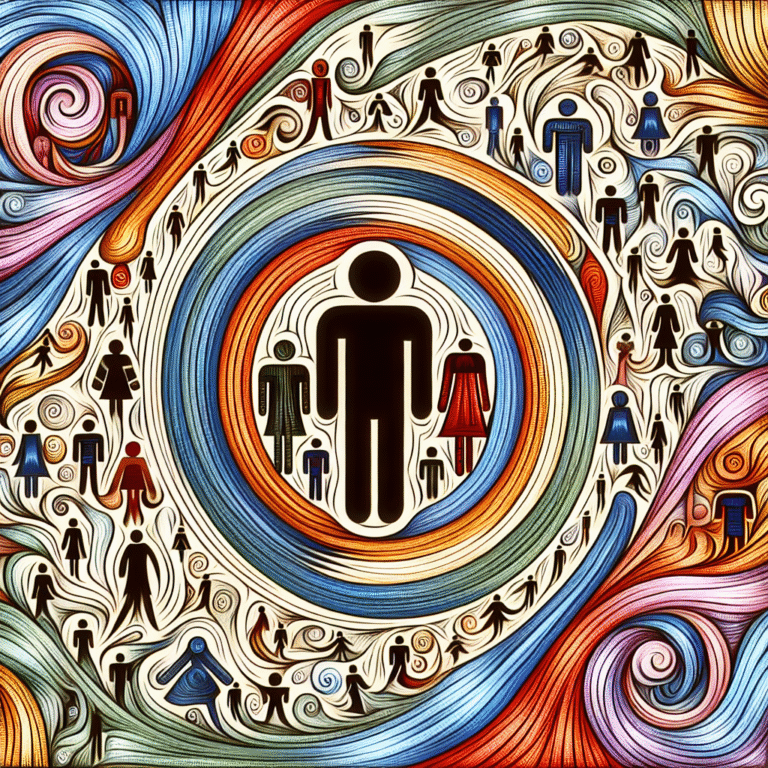
Introduction
Trust is a fundamental pillar of human interaction and connection. In a world increasingly filled with uncertainty, the psychology of trust: understanding the roots of distrust becomes not only relevant but essential. Whether in personal relationships, workplace environments, or broader societal contexts, trust, or the lack thereof, shapes our experiences and outcomes. But what happens when that trust is broken or never formed in the first place? Exploring the intricate layers of trust reveals significant insights into human behavior and societal dynamics.
The Nature of Trust
Defining Trust
At its core, trust is a psychological state comprising the intention to accept vulnerability based on positive expectations of the intentions or behavior of another. Broadly speaking, it can be categorized into three types:
- Interpersonal Trust: The belief in the reliability of friends, family, and colleagues.
- Institutional Trust: Confidence in organizations and systems, such as government and corporations.
- Societal Trust: General belief in fellow citizens and the social fabric that holds communities together.
The Role of Trust in Human Behavior
Trust influences our choices, determines our willingness to cooperate, and affects our emotional well-being. When trust exists, it can lead to richer relationships, greater collaboration, and overall life satisfaction.
However, when distrust takes root, it can lead to isolation, cynicism, and conflict—the exact opposite of the positive outcomes fostered by trust.
Understanding Distrust
The Roots of Distrust
Distrust can stem from various sources, including:
- Past Betrayal: Previous negative experiences can create lasting impressions that hinder future relationships.
- Fear of Vulnerability: The instinctive hesitance to expose oneself emotionally can lead to avoidance of trust-building.
- Cultural Influences: Societal norms and values can shape perspectives on trust, where certain environments promote skepticism.
Case Study: The Corporate Crisis of Trust
One notable example of the psychology of trust: understanding the roots of distrust is the fall of Enron. Once a highly regarded energy company, it collapsed in 2001 due to widespread fraud. The betrayal of trust felt by investors, employees, and the public resulted in significant repercussions for corporate governance and regulations. Post-Enron, many corporations experienced a profound impact on public trust, leading to movements for transparency and ethical standards in business practices.
Analysis
This case illustrates the cascading effects of broken trust—not just on individual investors but on entire industries. It highlights the essential need for ethical behavior and transparency as foundations for rebuilding trust.
Psychological Mechanisms Behind Trust and Distrust
Cognitive Dissonance
Cognitive dissonance plays a vital role in shaping our trust and distrust dynamics. When individuals experience conflicting beliefs or behaviors, they tend to dismiss information that contradicts their established trust beliefs.
Social Exchange Theory
This theory posits that relationships are formed based on a subjective cost-benefit analysis. Individuals assess risks before choosing to trust others, leading to the question: Is it worth the vulnerability?
Emotional Contagion
Emotional states are contagious. Trust fosters positive emotional exchanges, encouraging reciprocal trust. Distrust, conversely, amplifies negative emotions and erodes existing relationships.
Building Trust in Relationships
The Trust-Learning Cycle
- Openness: Be transparent about intentions and expectations.
- Reliability: Consistently follow through on promises.
- Communicate: Foster open dialogue to clarify uncertainties.
Case Study: The Rise of Open-Book Management
Open-book management was popularized in companies like Whole Foods, where employees were educated on all financial aspects of the business. This transparency created a culture of trust among all stakeholders, aligning individual interests with the company’s goals.
Analysis
The success of open-book management emphasizes how transparency can build a robust trust foundation. The psychology of trust: understanding the roots of distrust reveals that when employees feel informed and involved, they are more likely to commit to their roles and contribute positively to the organization.
The Impact of Technology on Trust
Digital Distrust
In today’s digital landscape, issues such as data breaches, misinformation, and online scams contribute to a growing sentiment of distrust. Social media platforms, while connecting us, can also propagate false information, deteriorating trust in the sources we once relied upon.
Case Study: The Cambridge Analytica Scandal
The unauthorized harvesting of personal data from Facebook users for political advertising strategies highlighted vulnerabilities in digital trust. The fallout led to significant distrust in not only tech companies but also in the political process itself.
Analysis
This incident underlines the intersection of technology and trust, stressing the importance of ethical practices in tech to restore and maintain public confidence.
Reviving Trust in Communities
Grassroots Movements
Community-driven initiatives have shown promise in rebuilding trust on a local level. When individuals come together to address mutual concerns, it fosters understanding and re-establishes trust.
Case Study: The Chicago Community Trust
Chicago’s Community Trust introduced programs aimed at strengthening community bonds and raising awareness about social issues. By engaging locals in meaningful dialogues, they’ve begun to repair fractured relationships and restore trust.
Analysis
This example highlights community engagement’s role in mending social divides and restoring trust. People are more likely to trust those they see actively participating in communal well-being.
Conclusion
Understanding the psychology of trust: understanding the roots of distrust reveals profound insights into human behavior and societal dynamics. While distrust can permeate every aspect of interaction, it is not insurmountable. By fostering dialogue, promoting transparency, and nurturing empathy, we can rebuild the trust that is foundational to success—both personally and collectively.
Moving forward, let us commit to becoming more trustworthy individuals, whether in our workplaces, relationships, or communities. Trust is not just a desirable quality; it’s an essential currency in our interactions.
FAQs Section
1. What are the primary factors contributing to distrust?
Distrust can arise from past betrayals, fear of vulnerability, cultural influences, and cognitive biases.
2. How can I build trust in my personal relationships?
To build trust, practice openness, maintain reliability, and communicate openly about feelings and expectations.
3. What role does technology play in today’s trust dynamics?
Technology can both foster and erode trust, depending on its usage and the ethical standards of the organizations behind it. Data breaches and misinformation can lead to digital distrust.
4. Are there specific strategies to rebuild trust in a corporate environment?
Implementing transparency, providing consistent communication, and inviting employee feedback are effective strategies in rebuilding trust within organizations.
5. How can communities restore trust after incidents of distrust?
Engaging community members through dialogues, shared projects, and grassroots initiatives can help reinforce bonds and rebuild trust among individuals.
By continuing to explore the psychology of trust: understanding the roots of distrust, we open the door to richer interactions and a more robust society.















